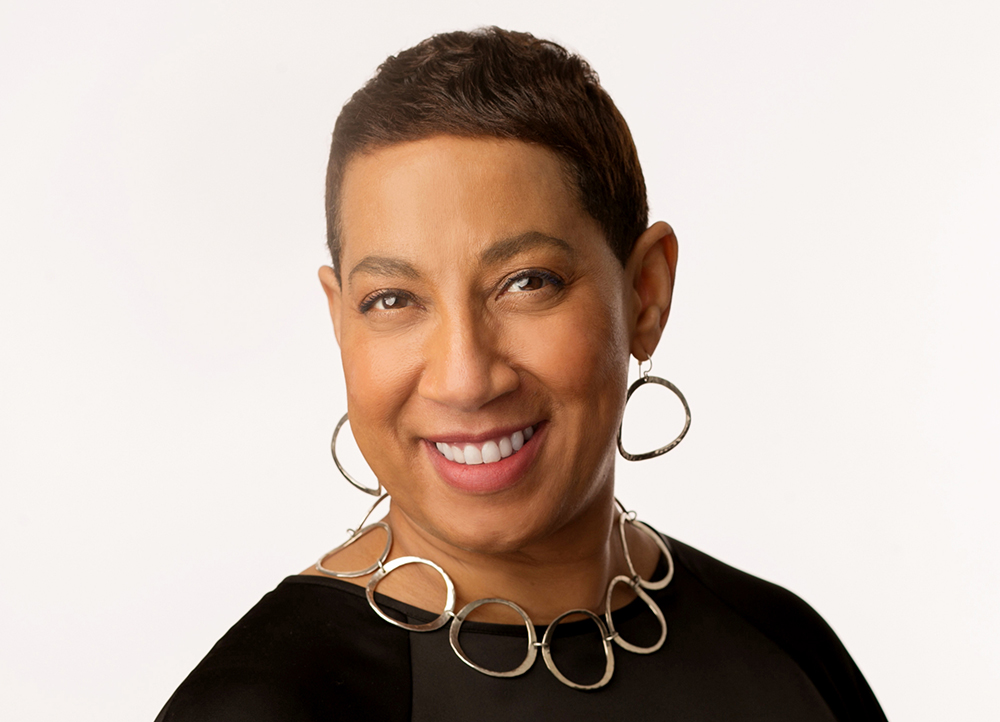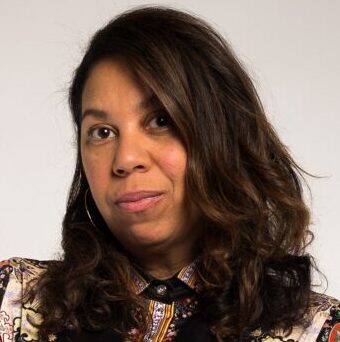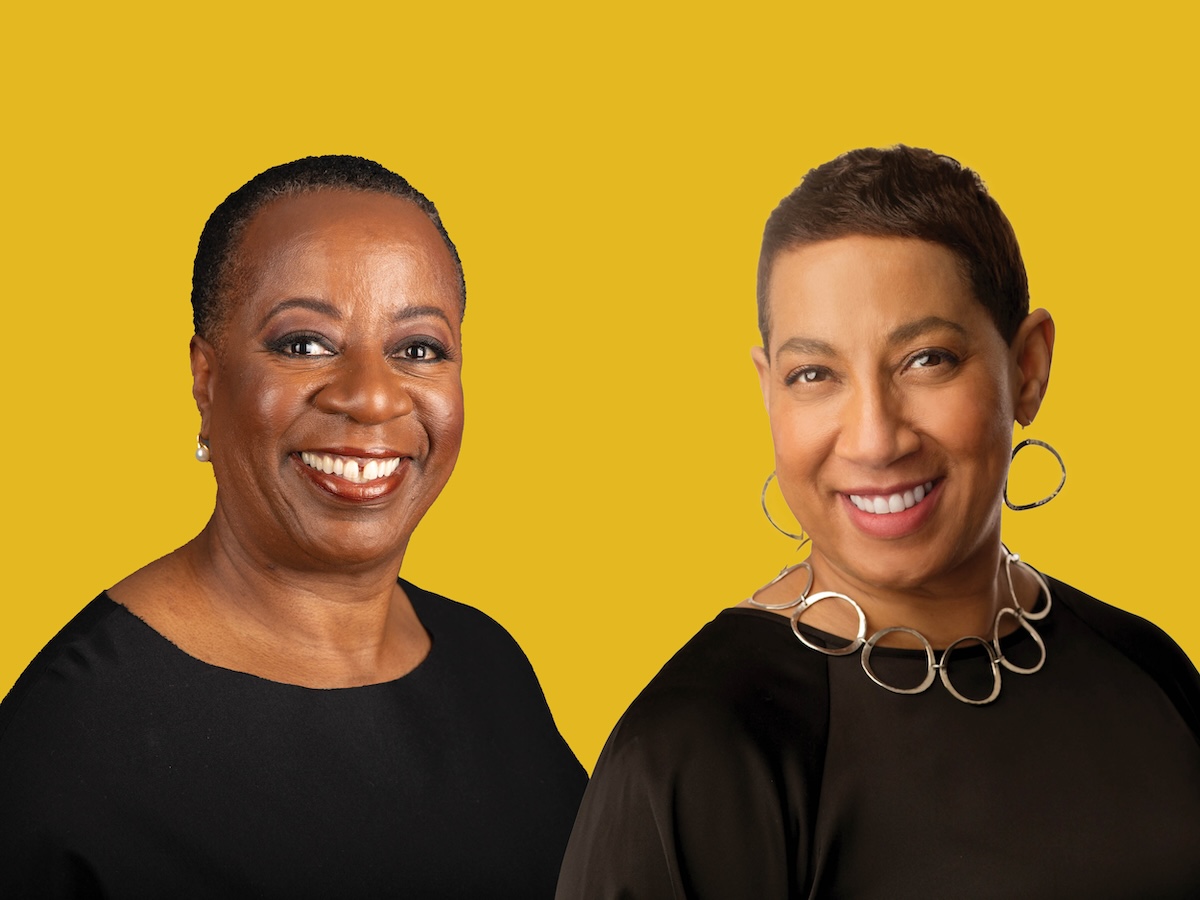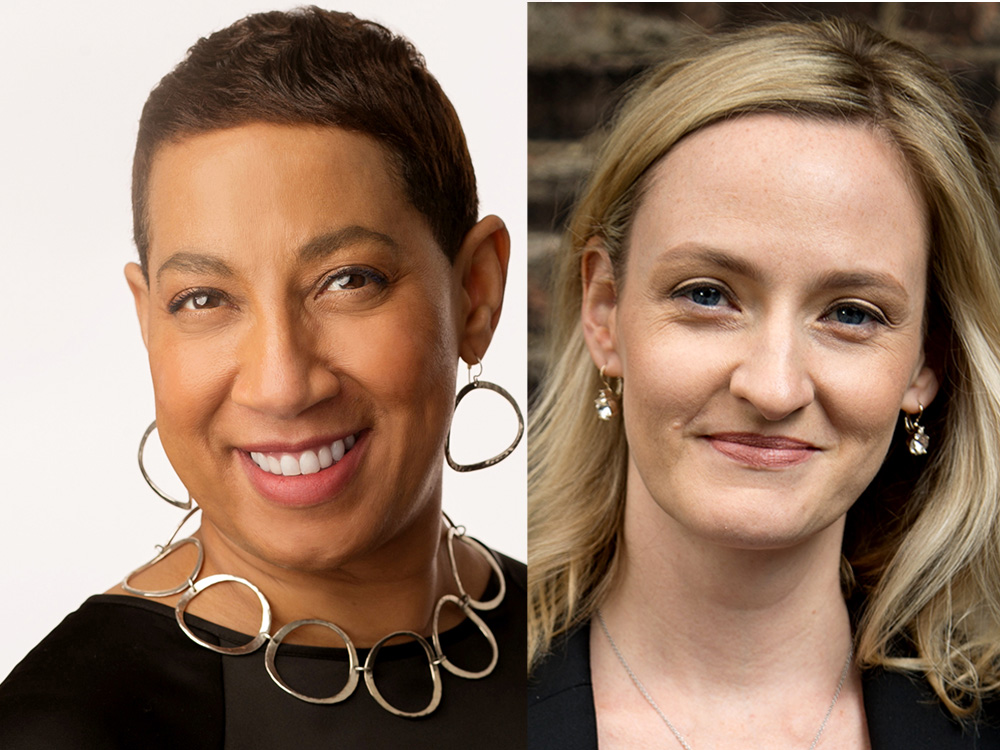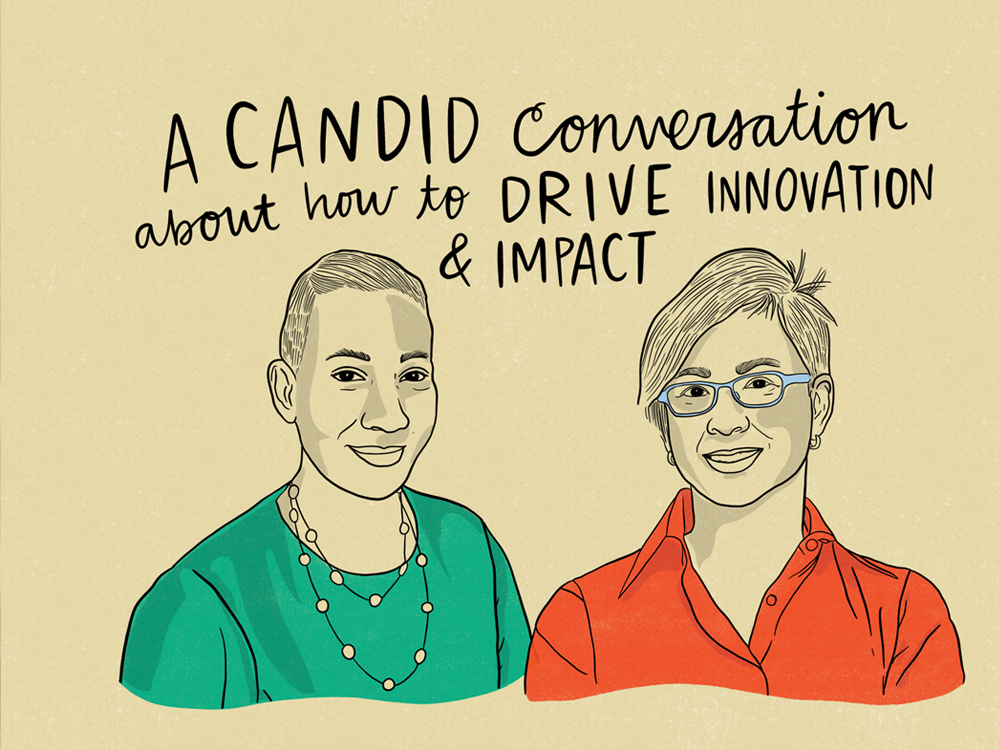How Skillman Reenvisioned its Grantmaking by Centering Trust and Accountability
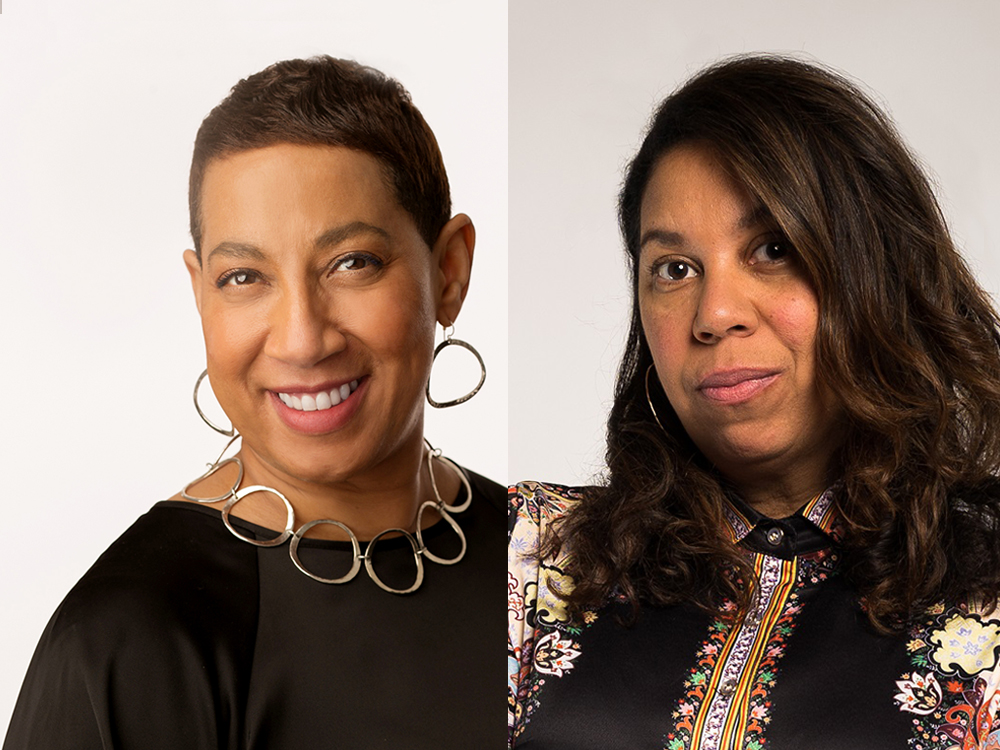
Examining how values are reflected in grantmaking practices to advance the funder’s mission is the heart of PEAK’s Tie Practices to Values Principle. It’s also about intentionally linking what your organization says with what it does, making it a practice that funders can—and should—demonstrate with its own staff in addition to its grant partners. And at The Skillman Foundation, President and CEO Angelique Power has led the charge with a keen focus on evaluating how racial equity is manifested in the inner and outer workings of the organization. The result has been reenvisioned approaches to grantmaking and dynamic community partnerships that have catalyzed Skillman’s mission to transform education systems and nurture and uplift Detroit’s youth.
As part of our ongoing CEO:CEO interview series, PEAK President and CEO Satonya Fair sat down with Power to share how they each are operationalizing and living these values, generating inspiration and insight on how other organizations can cultivate trust-based relationships rooted in equity and mutual accountability with all stakeholders. Highlights from their conversation follow.
Fair: We both took on leadership roles at the onset of the COVID-19 pandemic and as senseless murders were happening and continue to happen. I wake up in the morning, I come to work, and I think about all those lives lost, those people who didn’t get a chance to finish their day. What is motivating you right now to continue to take on this challenge of leadership at this time?
Power: Gen Z has given me hope at a time when I felt very hopeless. When I was leading the Field Foundation in Chicago, a lot of the proposals that were coming in were from organizers and artists in this young, generational cohort. I noticed that they were organizing themselves differently, in non-hierarchical structures, leading multigenerational and multicultural coalitions. I was watching Gen Z lap our concepts of social impact. I knew then that my purpose was to remove every barrier away from Gen Z so that they can lead us in directions we desperately need to move.
The opportunity to lead The Skillman Foundation was the biggest gift I could have gotten at that time. Detroit is a sparkling Black and Brown city, and it was an opportunity to work at a foundation that directly works with young people and centers them in our philanthropic systems to create systemic change.
Fair: At PEAK, our Principles serve as a guiding path for everything we do and to ensure that our members are thinking about how to advance racial equity. For example, our Tie Practices to Values Principle invites curiosity about how funders show up in communities for each other. And we take our own medicine. We’ve been examining our own practices, programs, and internal operations. It’s been interesting to see what our gaps are.
At Skillman, you are the third Black woman CEO, and most of your board, executive team, and staff are people of color. Yet one of your first acts was to launch a racial equity audit. Was this a necessary first step for you to create a vision for Skillman and your grantmaking? Did the results reveal a disconnect between your practices and your organizational values?
Power: Before conducting the racial equity audit, we defined our terms. When I started doing racial equity work in 2016, talking about systemic racism was a radical idea. Now, I could probably get a racial equity latte from Starbucks. What has that term come to mean? It’s like froth. People have released their racial equity statements, and they’re toothless. That’s why it was important for us to define what these words actually mean inside of The Skillman Foundation with our board and staff.
We had Lori Villarosa from the Philanthropic Initiative for Racial Equity [PRE] come to a board meeting. She helped us understand that racial equity is the shifting of power and resources within existing systems and that racial justice is about funding those most impacted to redesign systems.
And we often don’t think about how we uphold those systems. Part of racial equity work is to study how we must change at the individual and organizational levels. It’s about accountability, concepts of expertise, who makes decisions, and what gets measured. You have to lift the hood of foundations and look at where their dollars are invested. Many times, you’ll find that foundations are working against their mission.
The second step was doing the racial equity audit, looking at three years of spending—from our grants to our operating budget to our endowment by race—then reporting the findings publicly. The surprising thing wasn’t the data, it’s that we did the research. And that’s because there’s little accountability in philanthropy. So, a part of our work is to create tools that can be handed to our boss—the community—so that they can hold us accountable for what we say we’re doing.
Fair: Foundations don’t feel obligated to provide that kind of information. It takes an organization like Candid to encapsulate that data for the field so that organizations like PRE and PEAK can activate around resources and learning opportunities so that foundations can do better.
Power: Communities need to know what we’re doing and where our dollars are going. They also need to be part of the decision-making process because they are the most proximate to what’s happening.
Fair: To get to those solutions, there will be a lot of failure along the way. Foundation staff should remember that, in the business sector, most new businesses fail. There is a process for and money invested in research and development—and the level of trust that one has to have when writing a giant $10 million check to a new entity knowing that failure is the first road toward success. That’s common practice in business, but not in our sector. We ask nonprofits to be on the ground helping solve big issues with the equivalent investment of a few dollars.
Power: And we ask them to enact our theory of change in order to receive money. We need to rethink the role of philanthropy and take a new look at every decision we make. I think about Jessica Brown and Tara Cooper, who make up our grants management team. They interact with folks in the community perhaps more than anybody else on staff. For her, the community really is their bosses. They are the ones who help our partners navigate our organizational systems and relay these firsthand experiences to help us continually improve.
The only way that we’re going to solve this problem is to make the process the outcome we’re after. If we are mutually accountable to each other internally and externally, and if we are trying to solve these complicated issues through trusting relationships and shared resources, then maybe we can go further.
Fair: Seek a better tomorrow as defined, not by the funder, but by the community. I appreciate how you see Jessica and Tara. Every grants team, every community relations team I was part of, was tied to their nonprofit partners. But there are so many foundations that haven’t yet really established a grants management department.
PEAK has also been thinking deeply about how we can show up differently to help our community better understand why equitable practices matter. We realized that work starts with our team going through its own deep learning. We are working with Community Build Ventures on a year-long, staff-wide racial equity journey so that we can all be better catalysts for racial equity and justice. How are you advancing racial equity and justice within your organization? And when you think about engaging with partners in Detroit, what’s keeping your fire lit at this moment?
Power: I knew I needed to spend a long period of time listening, so my staff and I spent a year having conversations with residents, parents, educators, business titans, policymakers, and most of all, young people. What started as a listening tour turned into a community-rooted strategic planning process. We discovered what we were really asking was: What do we need to understand about Detroit? What do we need to understand about philanthropy? How has Skillman been helpful? How has Skillman been harmful?
We documented every session and came back within five days to ask attendees: “Is this what you said? This is what we heard.” We also brought youth writers and artists to record their own reflections from sessions. We’d share all of these notes and reflections publicly, for each and every session. What we were learning was the start of a redesign to our processes and strategies. What gives me joy is that we are building something in a slower way, in a more difficult and complicated way, but with a lot of people across the city directing what we do. The process is the heart of our strategy.
Fair: It is wonderful when PEAK similarly gets a moment to breathe and reconnect with the individuals in our network. When we’re not hectic, we listen differently and it changes the way we work. I’d love to hear more about that because you have the President’s Youth Council. How has including youth voices changed how you work and how you think about success?
Power: The last gift my predecessor, Tonya Allen, gave to me was creating the President’s Youth Council. When I first met with them, I recognized immediately they did not want to be asked questions. They wanted to be handed the keys.
We asked the council how they would give the dollars away. They used rank choice voting to make their decisions, and then they called everyone to personally let them know. And reporting? How did we know how the money was spent? They asked for social media posts. They had such a refreshing, different way of thinking about it. They also negotiated for more money than we had originally budgeted for.
We also brought them to the Mackinac Policy Conference as panelists. They became the youngest presenters in the history of this influential conference that drives our state’s policy agenda. They blew the doors off the place. We made a challenge from the stage: Do you want to work with Gen Z strategists on your biggest strategic issues?
So far, we’ve had the Pistons, chambers of commerce, and the city of Detroit working with our Gen Zers. The state is going to be working with them. Our goal is to be a conduit for knitting the city together with youth able to take the lead in designing their own destinies. They are organized. They are focused. And at Skillman, we know that we and everybody else needs them.
Fair: I’ve been a youth advocate and mentor for many years with different organizations. When you work with young people, you have to let your notions of things go and open room for their ideas and solutions. If you want to be a trusted partner in lifting up youth voices, one has to have good feedback loops in place. And when they look at your organization, they should see themselves.
But we have to be inventive about how we engage with the community, so we need to see change happen across the sector. But change needs to start at the individual level, and each person can lead change in all kinds of ways. That said, what shifts do you think need to happen more broadly in our sector? What do you and your team most want to change?
Power: Our north star is equitable education systems, and our work involves the philanthropic system, and both need changes. In terms of how we’re going to deploy resources to change equitable education systems, we’re going to fund people on the ground. That’s youth power, that’s educator power, and that’s resident power. Those are the ingredients that are needed to create an education system that works better. We are also going to work closely with policymakers, business leaders and other civic actors. Some foundations are traditional policy shops. Some solely fund racial justice work. We want to do both and work with as many takers as possible to get to where young people are the designers of their own destinies and ours.
We are also working on changing the philanthropic system while asking to be held accountable. I have a trustee, Pastor Kinloch, whom I love, and he always says, “You shouldn’t grade your own paper.” So we’re asking ourselves, “How do we do our work on equitable education systems, how do we do our work to change philanthropic systems, and how do we have someone else grade our paper?”
Fair: And that accountability is what so many people hope to see when they look at the sector because they know that we can do it. PEAK as a nonprofit shows up hoping to make foundations better so that nonprofits are better off every day. It’s not easy to get support and to keep members activated around what can be. But I think we both find motivation in being responsible for bringing the right people together to create containers for change.
